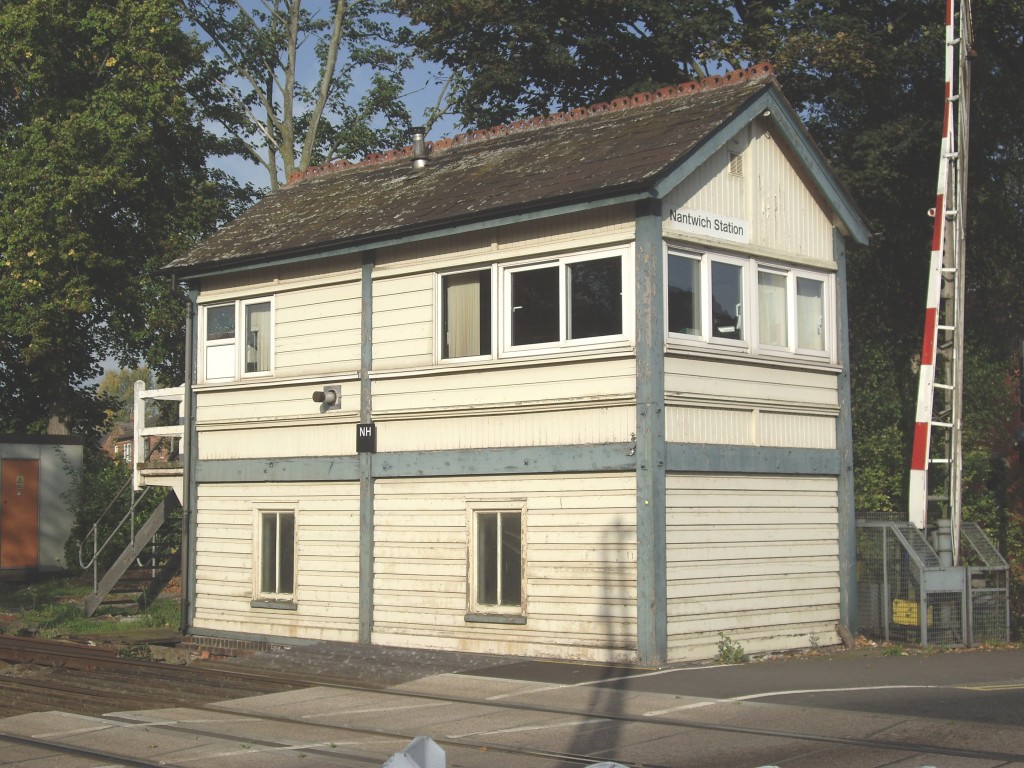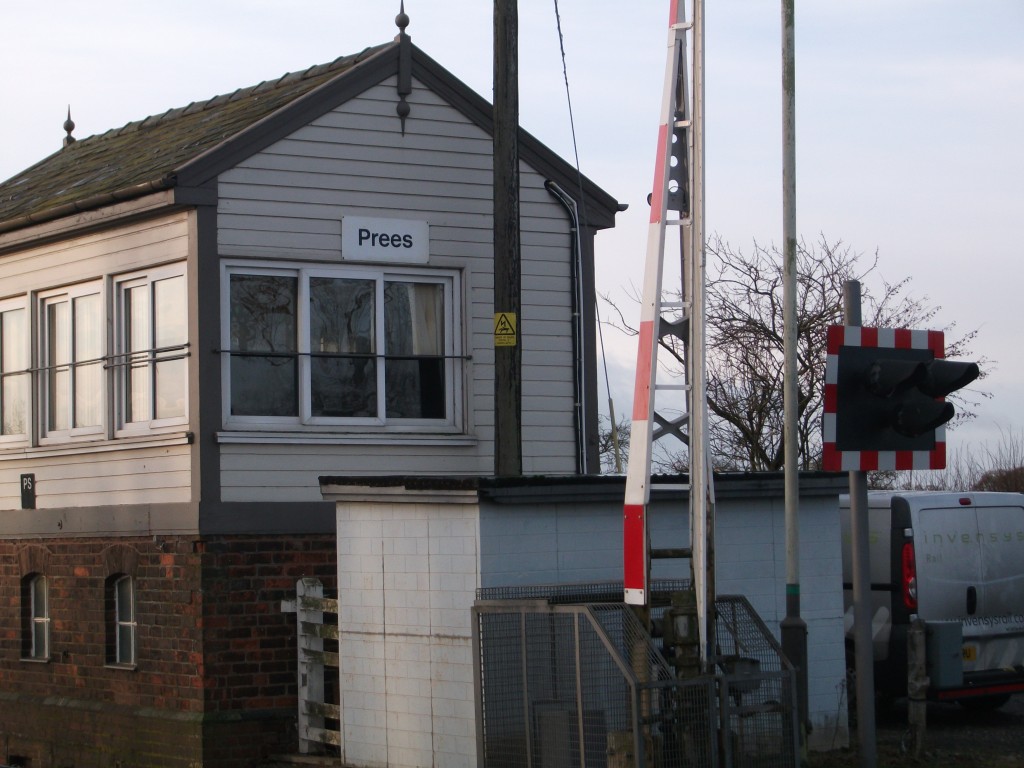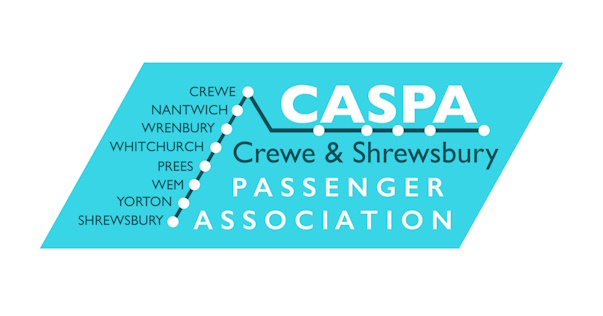A common lineside feature at one time throughout Britain there must have been thousands. Now with modern signalling technology the number of manual boxes diminishes every year and Network Rail have produced a plan to control the whole of the railway from just thirteen large signalling centres.
One of these is at Cardiff, from where the signalling and level crossings on our line have been controlled since December 2015. Until then the signals were still controlled by the old manual system, though at both the Crewe and Shrewsbury end the manual box is still open.
Listed here are all of the boxes on the line that have been traced, in order from Crewe. With some of the boxes mention is made of them being not fully manned, or not always in use. All but the largest manual boxes have an arrangement where all the signals for the through lines can be left clear and trains run through, the two boxes either side then communicating directly between them. It does, however, reduce the number of trains that can be run.
Crewe South Junction: Built in a 1930s style best described as ‘Moderne’. This box closed with the remodelling of Crewe Station in 1985, but the building, somewhat neglected, is still to be seen as your train leaves the south end of Crewe station. The reason for the massive design of the box is to withstand bomb blast, as when it was built there was a fear of an attacker’s bombers targeting railway junctions (justified, as it turned out).
Gresty Lane No. 1: A standard LNWR (London & North Western Railway – owners of the line until 1923) box design and a landmark as the first installation of electrically powered signalling in Britain in 1899.
Gresty Lane No. 2: Again, a standard LNWR box, closed in 1984 as part of the Crewe remodelling.
Willaston: A Standard BR design and a replacement of a previous LNWR box. The box was closed in 1985 and the crossing now monitored from Cardiff.
Nantwich Newcastle Road: A Standard LNWR box controlling the level crossing with reputedly the largest crossing gates in Britain, due to the angle of the road. Closed in the late 1960s.
Nantwich Goods Yard: A standard LNWR box controlling access to the station. Closed when the goods handling facility was withdrawn from Nantwich.

Nantwich Station: This controls the level crossing. This box was formerly sited at Aston Park, Wem. The date of removal to Nantwich is uncertain. This was the last crossing to have gates (as opposed to lifting barriers) on the Crewe – Shrewsbury line. When closed in 2015 the box was bought by a private group and is now used by a training company. It can be seen on their premises from Weston Road, Crewe.
Nantwich Shrewbridge Crossing: Not truly a signal box, but a crossing cabin. When the gates were opened for a train, the crossing keeper pulled a lever which allowed signals at Station and Market Drayton Junction boxes to be pulled off to allow a train through.
Nantwich Market Drayton Junction: Controlled the junction with the ex Great Western line from Wellington via Market Drayton, which branched off to the south just after crossing the canal going towards Shrewsbury. It was a standard LNWR design. The line to Wellington was closed in May 1967, but the box stayed open for trains between Nantwich and Wrenbury. However, the box caught fire shortly afterwards, believed to be due to the signalman not properly dowsing his stove when he went off duty, and it was demolished no later than early 1968. One of the signal box name plates was recovered during demolition and is now held by Nantwich Museum.
Wrenbury: This controls the level crossing. It would also have controlled access to the goods yard, at the other end of the station. A standard LNWR design again.
Whitchurch Chester Junction: A LNWR box controlling access to the branch to Malpas and Chester. Closed in early 1970s.
Whitchurch Goods Yard (later Whitchurch): Controlled access to the now closed goods yard, but then the only signal box at Whitchurch. After many years of being switched out (meaning the box is unmanned and the signals left at clear) it was closed in the summer of 2012. Again a LNWR box.
Whitchurch Cambrian Junction: This controlled the junction with the ex Cambrian Line to Oswestry, the embankment for which can be seen curving away to the west at the south end of the station. It was closed in the early 1970s. A LNWR box.

Prees: A standard LNWR box controlling the level crossing. Would also have controlled access to the goods yard.
Wem (Aston Park): Opened to control northern access to Aston Park Camp. It might not have displayed it’s name on the side as a wartime austerity measure. It’s closure date is uncertain, as is it’s date of removal to Nantwich.
Wem: A LNWR box controlling the level crossing. Would also have controlled access to the goods yard. It had a new LMS (London Midland & Scottish Railway; 1923-1947) frame installed in the old box during the Second World War to provide expanded facilities to control access to Aston Park from the south.
Tilley Crossing: Small LNWR box to control the road crossing between Wem and Yorton.
Yorton: A LNWR box that would have controlled access to the goods yard. It was only used on two shifts; not open at nights. It is now closed and demolished in the 1960s.
Hadnal: Would have controlled access to the goods yard. Closed with the goods yard in the 1960s.
Harlescott Crossing: A standard LNWR box, which would have been the same size as Wem box. It was extended in 1941 to meet the needs of the local MOD sidings etc. You could see the join!
Shrewsbury Crewe Bank: This is a wartime LMS replacement of a standard LNWR box. Towards the end it was often not manned.
Shrewsbury Crewe Junction: Standard LNWR larger box, although it shares many features of the smaller boxes. It dates from the 1903 remodelling of Shrewsbury Station. It controls entry and exit at the north end of Shrewsbury station and is still in use.
Shrewsbury Severn Bridge: This signalbox at the south end of Shrewsbury Station is the largest manually operated signal box in Britain and possibly the world.
Original source material by John Cresswell, updated with recent changes.

